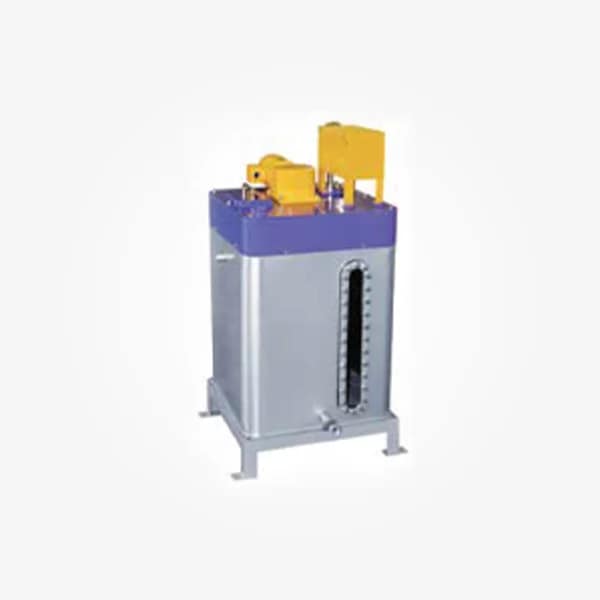The Value of Recycling Paper Resources - Examples from Murim P&P, Hansol Paper, and Jeonju Paper
Following the first installment on secondary batteries, this is the second installment of AAK's environmental magazine, Treatment of Pulp Wastewater and Resource Recycling Vol. 2, which discusses black liquor and resource recycling.
vol.1 > From paper and pulp wastewater treatment to nanocellulose and bio-aerosols Current Articles vol.2 > Hansol Paper and Murim P&P, domestic paper and pulp companies, and resource recycling cases overseas
First, we discussed the wastewater treatment process last time, but as a refresher, let's talk about black liquor.
Black liquid (Black liquor ) is a by-product of the papermaking process, created during the pulping of wood. Black liquor contains lignin, hemicellulose, organic acids, and minerals. Lignin is the main component that binds the cellulose in wood cell walls and provides structural strength, and is dissolved in the black liquor when the cellulose is separated during the pulping process.
So, while the black liquor contains lignin, the black liquor itself is not lignin, it is a mixture of several components.
‘As there is a saying that 'paper/pulper is an industry that consumes 100 tons of water to produce 1 ton', it is a field that generates a lot of greenhouse gases due to high energy and water consumption, but I also mentioned that the recycling of wastewater and waste heat has developed to more than 501 TP3T.
Let's take a look at a specific example of this.
Resource recycling in the domestic pulp industry
Black liquor recycled into steam and power, new material development technology
Recycling Murimpienpi's black liquid resources
The image above was created by AI and is not affiliated with any paper/pulp company.
Murim P&P's black liquor resource recycling and new material performance
1.Biomass fuel from black liquor utilization at the Ulsan plant - how does the plant generate electricity?
MurimP&P's process is known as the pulp and paper consistency process. It is a company that uses ‘bleaching chemical process' in various pulp manufacturing processes in the previous vol.1, and it is a company that uses wood chips, discharges black liquid, and recycles it.
Recycled paper does not go through the drying and chemical process of wood chips as it recycles various recyclable food containers, but the pulp process processed from wood chips varies from company to company, but Murim P&P does not consume oil energy sources such as LNC used in the process as it dries and bleaches wood chips.
2.Murimphy & P's Recycling Data Metrics
MurimP&P uses 850,000 tons of wood chips per year as raw material, with nearly half, 450,000 tons, produced as natural pulp.
So how much black liquor is produced? It is about 750,000 tons, and the black liquor is used to recycle 831 TP3 tons of steam (62.2 tons) and 171 TP3 tons of electricity (12.7 tons). The cost of eliminating this waste is said to be 168 billion.
In other words, the black liquid lignin and cellulose that are separated when processing wood chips into pulp are separated, and the black liquid component itself, which can be incinerated, is recycled back into the boiler, so the cost of purchasing raw materials such as oil and gas is significantly lowered.
This means that the Approximately 870,000 metric tons of greenhouse gas emissions avoided from the file.
In vol.1, we explained that the final purpose of lignin separation is to extract and process cellulose, the actual raw material of paper, and we also mentioned that ‘nanocellulose' is attracting attention as a big new material because it is related to the nano industry, which has been active in R&D research for many years around the world.
New products born from Murimpi & P's R&D of new materials 1.nanocellulose (CNF) : Nano-field products with potential in various fields such as cosmetics, film, space industry, etc.
2.CellRimⓇ : biodegradable eco-friendly plastic made of wood + plastic
As such, Murimpi NP is a leading environmental company with a variety of products born from R&D achievements in energy resource recycling technology and new materials that are comparable to the technology of foreign paper companies in black liquor recycling.
Source: https://www.moorim.co.kr:13002/product/nano.php?conarea
Powerhouse in recycled paper resource recycling, partnering with various organizations, corporations, and the private sector
Hansol Paper's recycling of resources with various companies
Hansol Paper is a member of the Hansol Group, which includes environmental engineering EPC business, chemicals, IT, and distribution in its environmental business division. As such, it has various high technology levels as an environmental company in resource recycling.
EcoVadis provides holistic sustainability assessment services for companies through a global cloud-based SaaS platform. Assessments cover a wide range of non-financial management systems, including environmental, labor and human rights, ethics, and sustainable procurement impacts. Each company is assessed on material issues relevant to its size, location, and industry.
Hansol Paper has also been recognized as one of the ‘Most Admired Companies" by the Efficiency Association, which shows how much the company values the environment in its operations.
Hansol Paper's paper-related resource recycling cases are as follows.
DecoHome's waste wood is recycled to provide energy, which represents a savings of about KRW 5.9 billion.
We conduct various resource recycling projects through the ‘CO-ECO’ business agreement, which collects recycled paper from various B2B customers. Examples include recycling sterilization packs to use as raw materials for white cardboard and plastic pallets.
Hansol ME has EPC experience in wastewater treatment plants for the water industry and has a wide range of technologies.
Hansol Paper is also a technology company with EPC capabilities for environmental plants and chemical technology, but above all, Hansol Paper is the most active company in recycling resources with local governments, B2B business agreements, and the private sector. There are many companies with them, and they have received many accolades for their active recycling practices.
Hansol Paper's major eco-friendly products and new materials
Terrabars: ‘containers for nature'. A water-based coating that replaces the plastic-like polyethylene (PE) coating.
Duracle : Nanocellulose Products. Applied in cosmetics, medical, sports, automotive, chemical, etc.
Virtual Green Pavilion https://www.hansolexhibition.com/
The first green company in Jeonbuk
Biogas Power Generation from Jeonju Paper
Jeonju Paper's Green Biogas Power Generation
Like its predecessors, Jeonju Paper is a historic company that started as Sehan Paper in 1965 and is now part of the Seah Group.
Jeonju Paper is a company that practices biogas power generation from wastewater treatment facilities, as explained on the official website. As explained in vol.1, the pulp manufacturing process requires desulfurization, which requires a desulfurization facility, and it is reused for steam and electricity.
Wastewater purification and biogas generation by applying eco-friendly new technologies to the wastewater treatment process (biogas utilization and eco-friendly power generation)
We are actively participating in global low-carbon green growth and climate change policies by treating wastewater generated from raw material production facilities with anaerobic microorganisms that live in natural ecosystems and generating electricity using biogas (methane) from the wastewater treatment process.
The existing wastewater treatment biological method uses aerobic microorganisms to decompose the wastewater, adding an eco-friendly new process (anaerobic microbial treatment) to the existing process to generate biogas (methane=LNG) and sell eco-friendly electricity through biogas power generation facilities. Renewable energy certificates (RECs) in the application.
Sources: Jeonju Paper https://jeonjupaper.com/productionprocess
Environmental Certification of Jeonju Paper First in paper industry, first in Jeonbuk region to be designated as a green company
Dilemmas and efforts to overcome them
B2C awareness matters, R&D investment in environmental technologies
Dilemmas and efforts to overcome them
The paper and pulp industry is more of a traditional B2B business than a B2C one.
As explained in vol.1, office paper has exploded due to digital transformation, while the rise of contactless e-commerce due to the pandemic and the upscaling of renewable paper due to eco-friendly policies of food and beverage franchises are driving paper companies to modernize their B2B strategy with green technologies.
The paper industry itself is about making paper that is consumed, and paper that is consumed, so while revenue and operating margins for paper and pulp companies around the world have been shaky, the trend is now toward B2B.
There are two main ways to market the company as environmentally friendly to customers: branding, and technically, reusing black liquor in plant facilities and steam and power through self-generation to overcome limitations in energy-hungry areas.
And there is still a lot of work to be done on commercialization and cost reduction through technology development, mass production, and the discovery of various values for ‘nanocellulose' to expand its applications.
As shown in the examples of Korean companies described above, it is safe to say that the level of Korea's paper and pulp industry has reached a ‘high level' due to the high level of environmental technology and advanced technology for plant business and power generation facilities.
We deeply appreciate the resource recycling activities, environmental protection activities, and community contribution activities of domestic paper and pulp manufacturers through wastewater recycling and black liquid recycling.
Series
vol1. Pulp Wastewater Treatment Information and Nanocellulose View


